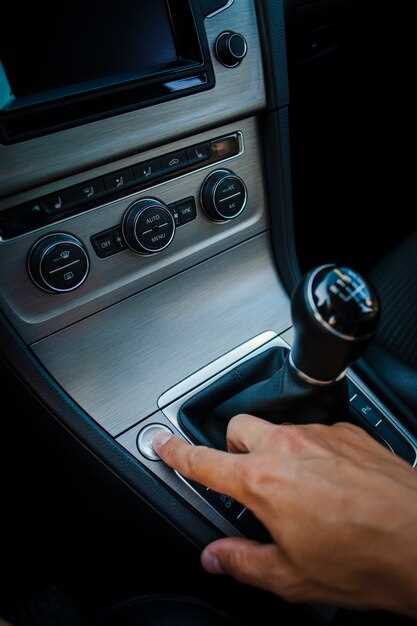
The transmission plays a crucial role in the performance and driving experience of any vehicle, including the iconic Toyota Land Cruiser. When considering a Land Cruiser, potential buyers often weigh the advantages of different transmission types, primarily manual and automatic systems. Each type offers its own unique benefits that cater to varying preferences and driving styles.
Manual transmissions are often favored by driving enthusiasts who appreciate the level of control they provide. With a stick shift, drivers can fine-tune the power delivery and manage engine revs more effectively, which is essential when navigating challenging terrains or off-road conditions that the Land Cruiser excels in. This type of transmission can enhance the driver’s engagement and connection with the vehicle, making it an appealing choice for purists.
On the other hand, automatic transmissions have gained immense popularity in recent years due to their ease of use and convenience, especially in urban settings. With the advancements in technology, modern automatic transmissions offer exceptional responsiveness and efficiency, making them a practical choice for many Land Cruiser owners. The seamless shifting and ability to easily adapt to varying driving conditions can greatly enhance the overall driving experience.
In this article, we will delve deeper into the characteristics, advantages, and disadvantages of both manual and automatic transmissions in Land Cruisers, allowing you to make an informed decision based on your needs and preferences.
Driving Experience: Manual vs. Automatic in Off-Road Conditions

When navigating challenging terrains, the choice between manual and automatic transmission significantly influences the driving experience in Land Cruisers. Each type of transmission offers distinct advantages and limitations that cater to different driving styles and preferences.
A manual transmission provides a more engaging and controlled driving experience, allowing the driver to select gears based on the specific conditions encountered. This feature enables precise power management, which is crucial when traversing steep inclines or rocky paths. Drivers often appreciate the ability to downshift quickly to gain torque when needed, providing a sense of connection with the vehicle that can enhance off-road performance.
On the other hand, an automatic transmission is designed for convenience, especially in unpredictable off-road situations. Many modern automatics now come with features such as adaptive shift patterns that respond to terrain changes, enabling smoother acceleration and better handling on slippery or uneven surfaces. The automatic’s ability to seamlessly adjust gear ratios allows drivers to focus more on navigating obstacles rather than managing gear changes.
In off-road conditions, the choice often boils down to personal preference. Enthusiasts may favor manual transmissions for the control and driver engagement they offer, while those who prioritize ease of use might lean towards automatics. Ultimately, both transmission types have merits that can enhance the overall driving experience in Land Cruisers, depending on the terrain and the driver’s skill level.
Fuel Efficiency: How Transmission Type Affects Mileage

The type of transmission in a Toyota Land Cruiser plays a significant role in determining its fuel efficiency. Manual and automatic transmissions operate differently, leading to distinct impacts on mileage. In a manual transmission, the driver has direct control over gear selection, which can allow for more efficient driving practices. Skilled drivers can optimize engine performance and maintain lower RPMs during cruising, potentially enhancing fuel economy.
On the other hand, automatic transmissions have evolved significantly, incorporating advanced technologies such as continuously variable transmissions (CVTs) and dual-clutch systems. These types of automatics can adjust gear ratios seamlessly, allowing the engine to operate at optimal efficiency based on driving conditions. This results in better fuel efficiency compared to older traditional automatics. However, depending on driving style and conditions, some automatic systems may lead to higher fuel consumption, particularly in stop-and-go urban environments.
In terms of comparison, several factors influence fuel efficiency in Land Cruisers. Weight, driving conditions, and the specific engine type all interact with the transmission type. Typically, manuals may provide slightly better mileage in a controlled driving environment, while modern automatics can excel in varied conditions through adaptive shifting technologies.
Ultimately, the choice between manual and automatic transmissions in Land Cruisers should consider not only the preference for driving style but also the implications for fuel efficiency. Understanding how each transmission type affects mileage can aid buyers in making informed decisions, balancing performance with overall operating costs.
Maintenance Considerations for Manual and Automatic Transmissions
When it comes to maintaining the transmission system in Land Cruisers, there are significant differences between manual and automatic types. Each transmission type has distinct maintenance requirements which should be understood to ensure optimal performance and longevity.
Manual transmissions typically require less frequent maintenance compared to their automatic counterparts. However, attention to the clutch system is crucial. Regular inspection of the clutch fluid and timely replacement of worn-out components can prevent shifting issues and prolong the life of the manual transmission. Regular fluid changes every 30,000 to 60,000 miles are recommended to maintain the necessary lubrication and protect against wear.
In contrast, automatic transmissions are more complex and often require more detailed maintenance. It is essential to monitor the transmission fluid levels and quality regularly. Automatic transmissions typically have a filter that should be changed along with the fluid every 30,000 to 50,000 miles, as this helps to prevent contaminants from damaging the system. Additionally, overheating can be a frequent issue; hence, inspecting the cooling system is critical in maintaining an automatic transmission.
Both transmission types benefit from routine inspections. Regular check-ups can identify potential issues early, whether it’s a fluid leak in a manual transmission or warning signs of electrical failure in an automatic one. Furthermore, adhering to the manufacturer’s guidelines on service intervals plays a vital role in ensuring that the transmission operates smoothly.
In summary, understanding the maintenance needs of each type of transmission in Land Cruisers is essential for performance and reliability. Manual transmissions require attention primarily on the clutch system, while automatic transmissions demand a more comprehensive maintenance approach due to their complexity.
